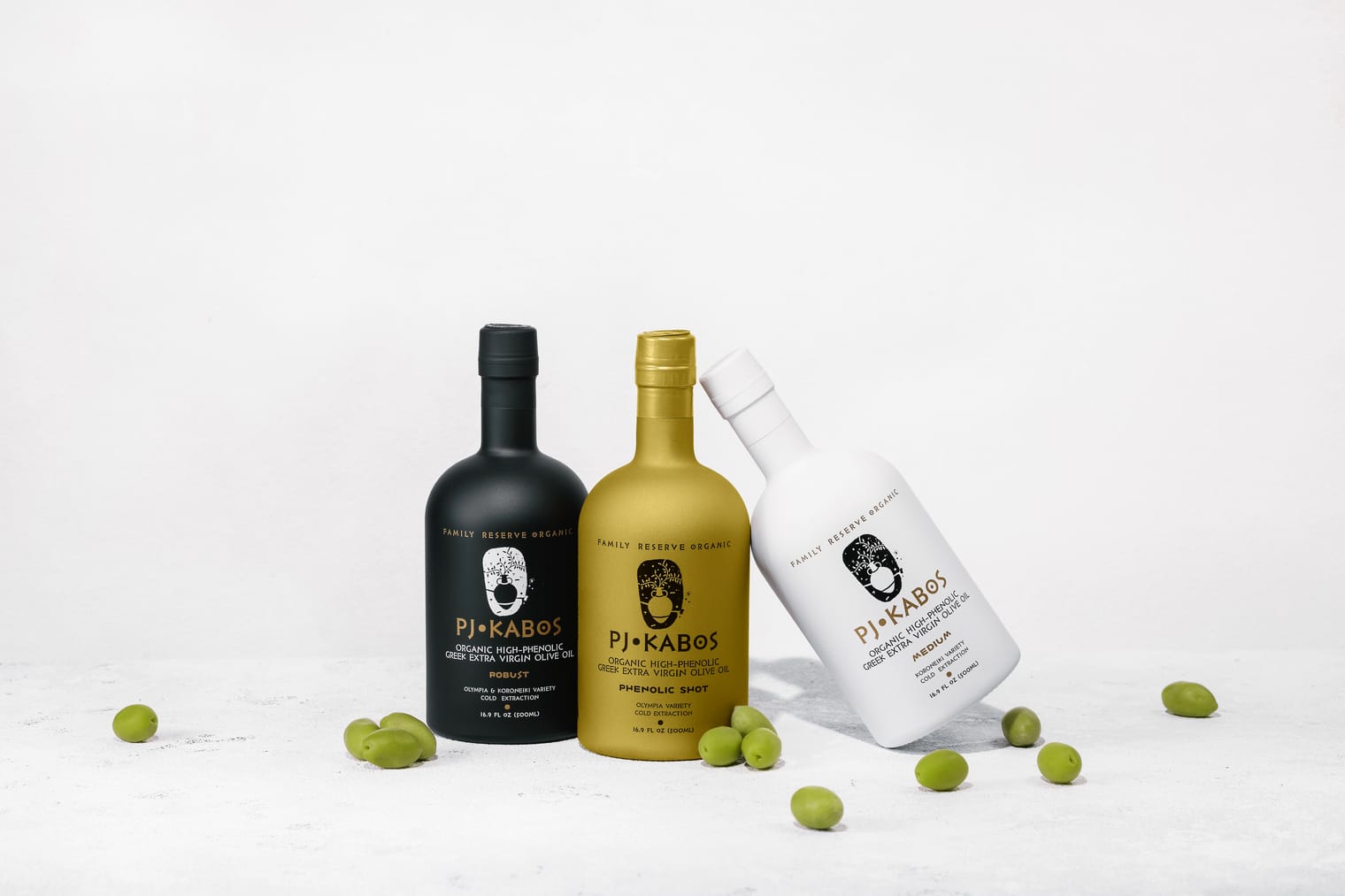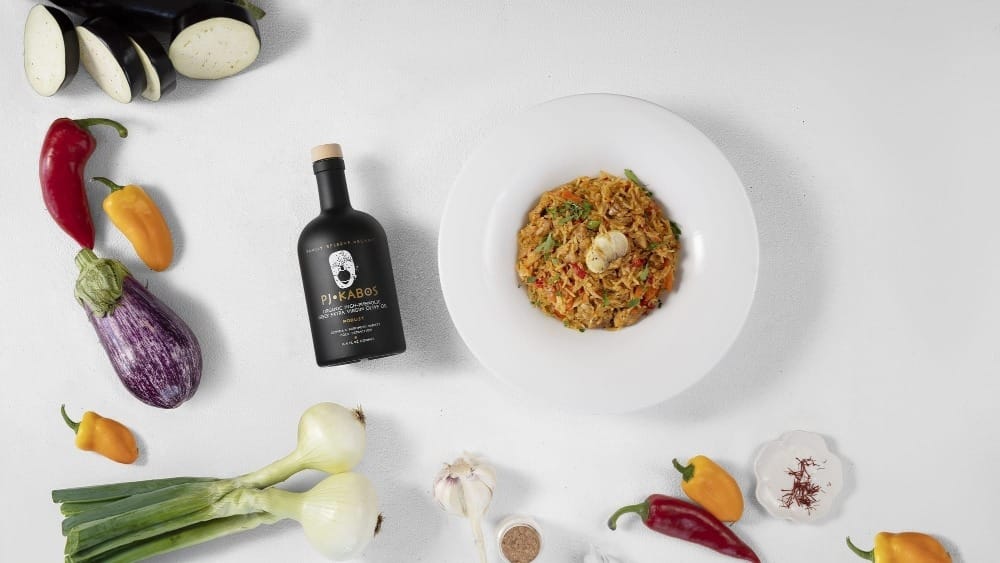Part 1: The Development of Mediterranean Greek-style Fish Soup—Psarosoupa
Soup
Can you imagine a world without soup? I can’t. It’s the comfort food that people in every corner of the earth rely upon to fill their bodies with needed electrolytes, to heal us when sick with a cold or flu, to warm us on cold winter days—or, as my friend from Myanmar explained, to refresh and rehydrate in a hot, humid climate, such as her homeland where people enjoy soup every day, even at breakfast (a catfish-based noodle soup called monhinga). Beyond these practical reasons, soup is just plain delicious. And basic. But is it really that basic?
Soup: Not the Oldest Way to Cook
Interestingly enough, while boiling is one of the oldest cooking methods worldwide, it isn’t the most ancient. Roasting and grilling over open flames, smoking and drying, fermenting, and even baking in earth ovens likely came first. Boiling, after all, requires some form of vessel to hold the water. This is where “the pottery revolution” comes into play. Pottery making marked a pivotal turning point in human history, with profound effects on society, from fostering the development of permanent settlements to becoming a crucial trade commodity and spurring advancements in kiln technology.
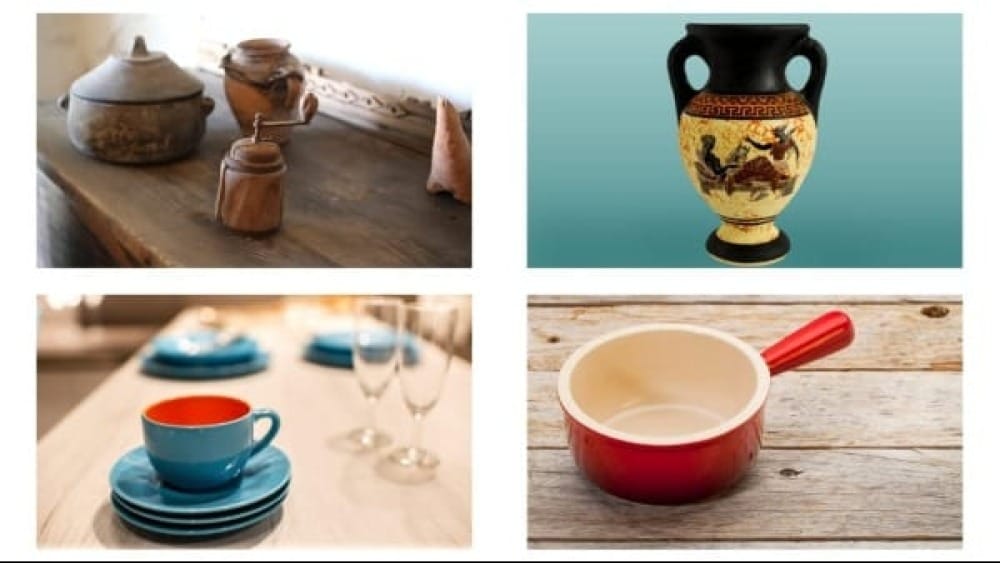
Pottery and Fish Soup
But beyond these broad impacts, pottery revolutionized the culinary world, with Ancient Greece being one of the pioneers to master and significantly advance both the industry and art. Building on foundations laid by earlier Near Eastern civilizations, the Greeks elevated pottery to new heights. They developed refined techniques for creating highly functional and aesthetically pleasing pottery that was not only used for cooking but also became a vital part of their cultural and social rituals. The Greeks excelled in both craftsmanship and innovation, influencing pottery styles across the Mediterranean and beyond. Their advancements in kiln technology, glazing methods, and artistic decoration set them apart, making Greek pottery highly sought after and enduringly influential in the ancient world.
The mastery of pottery allowed people to create nourishing and delicious soups, like the ancient Mediterranean recipe we are showcasing today: psarosoupa. This particular recipe, passed down through generations from my mother-in-law to me, and from her mother before her, embodies the essence of Mediterranean cooking with its generous use of olive oil. As vessels for boiling water became more reliable, soup-making expanded into exciting new culinary possibilities. Boiled fish quickly emerged as one of the earliest and most delightful types of soups due to its nutritional richness and the widespread availability of fish. This time-honored tradition, preserved through family recipes and shared across generations, continues to celebrate the simplicity and depth of ancient cooking methods throughout the world.
Stone Boiling: An Interesting Technique
Particularly fascinating is the ancient technique known as "stone boiling," used by indigenous cultures in North America to prepare soup. In this method, specially selected stones were heated in a fire and then placed into water-filled containers made from materials such as animal hides, bark, woven baskets, or even dug-out earth pits. These containers were often coated with natural resin to make them watertight. This technique not only highlights the ingenuity and resourcefulness of these cultures, especially in regions where suitable clay for pottery was either scarce or yet to be developed, but it also demonstrates their adaptability. By adding the hot stones incrementally, they could control the temperature and cook their soups without placing the container directly over a flame, which would damage the delicate vessel.

Ancient Wisdom: The Innate Benefits of Fish Soup
In ancient days, people everywhere probably realized that when they ate soup made with fish they felt great. Combining fish with other local ingredients not only kept them well-nourished and hydrated but also provided energy that was easy to consume. It was delicious, something to look forward to, and it certainly made feeding ancient babies—and all people who no longer had teeth!—a lot easier. The soft texture of soup was a welcome contrast to grilling or drying.
Modern Science: The Proven Health Benefits of Fish Soup
Today, we understand that fish soup creates a nutrient-rich broth, releasing essential minerals like calcium from the bones and vitamins such as B12, D, and A into the liquid. Omega-3 fatty acids, particularly abundant in oily fish, support heart health, reduce inflammation, lower cholesterol levels, regulate blood pressure, and—especially important for our longer lifespans—support brain health, potentially reducing the risk of neurodegenerative diseases. Fish soup is also known to enhance digestibility, making it easier for the body to absorb nutrients. Additionally, it aids in hydration, which further supports digestion and nutrient absorption. The gelatin and collagen released into the broth benefit joint health. While ancient peoples may not have known the science behind these benefits, they recognized that fish soup made them feel good and kept their children healthy and strong.
Fish Soups: Global Comfort Food
In Mediterranean cultures, boiling fish has been a traditional practice for centuries and thus, psarosoupa, has deep historical roots here. But obviously fish soup is not unique to the Mediterranean; it is cooked everywhere in the world where fish are plentiful using local ingredients.
It would be correct to say that fish soup is a global comfort food, with each region adding its unique touch. A few examples would be in Asia, Japan’s miso soup often includes fish, while Thailand’s tom yum combines fish with fragrant herbs and spices. Africa boasts laksa, a traditional West African fish soup that is both hearty and flavorful. Made with a rich, spiced broth and often enhanced with tomatoes, vegetables, and fragrant herbs, laksa showcases the vibrant culinary traditions of the region while providing a nourishing and warming meal. In North America, chowder, particularly clam chowder from New England, includes fish or seafood in a creamy broth or tomato base. South America is known for caldo de pescado, a traditional fish soup from coastal regions of Colombia and Peru, often spiced with local herbs. In Australia, seafood chowder made from freshly caught fish and shellfish is a beloved dish that reflects the country’s rich maritime culture. Each of these soups highlights the diversity of flavors and cooking techniques that different cultures bring to the table.
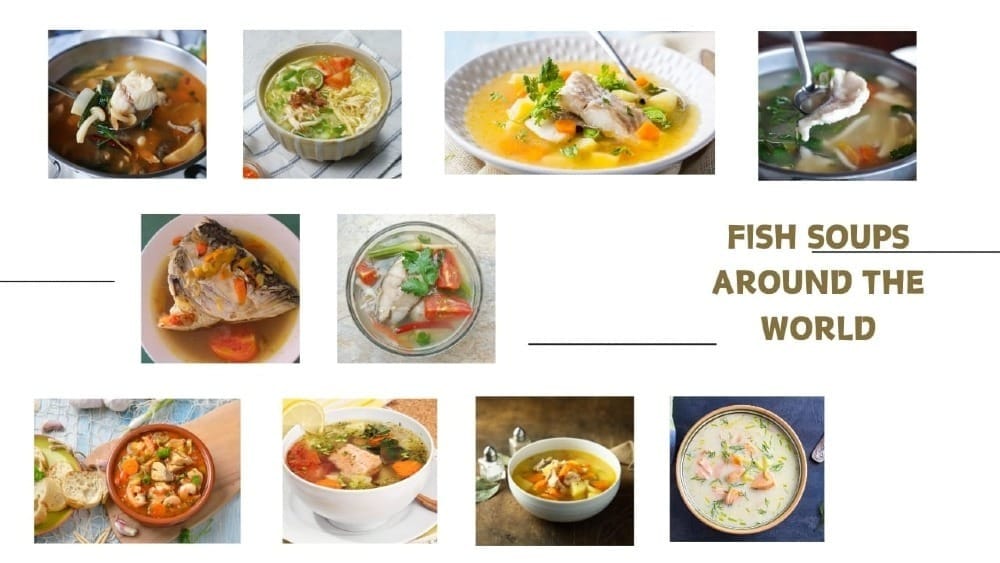
A Word about the Types of Fish to Use in Psarosoupa
For our fish soup, you can use a variety of fish types. Each will of course give a different flavor to the soup. We used Atlantic Cod (Bakaliaros in Greek). It has a mild flavor that complements the Mediterranean seasonings and ingredients. Other fish that you may use for this recipe include Haddock, Pollock, Sole, Flounder, Sea Bass (very popular in Greece where it is called Lavraki), and Snapper. But even oily fish such as Salmon, Mackerel and Trout, which will add stronger flavors to your soup may be used, as long as robust fish flavors are enjoyed by those partaking.
Use whatever fish is available to you and don’t get caught (no pun intended!) on getting a particular type of fish. Just...make your soup!
Basic Recipe
As with my mother-in-laws original recipe, our recipe today is just a starting point to making Greek-style Mediterranean fish soup. Experiment with different types of fish to find your favorite combination. If you are interested in the traditional way of cooking psarosoupa, use the whole fish. Many fish are in sizes that are manageable for cooking in a pot all-in but, if needed, larger fish can be cut into sections to fit them into your pot more easily. I seem to remember my mother-in-law doing that on more than one occasion.
When buying fish for your soup, the key is to ensure it is either freshly caught or, if frozen, was flash-frozen at sea, which usually indicates good preservation. The ingredients added to psarosoupa can then be adjusted based on the catch of the day—or night, as many fish, such as Red Mullet (Barbouni) and Sea Bass, are traditionally caught at night. A bit more of this or a bit less of that will help you create the perfect ancient Mediterranean, Greek-style psarosoupa for you and your family to enjoy today, just as people did in ancient times.
Of course, one constant in making psarosoupa is the importance of using high-quality olive oil, such as our Family Reserve Organic Medium & Family Reserve Organic Robust. Not only does it impart a rich and distinctive flavor to the soup, but it also provides numerous phenolic health benefits. In keeping with the Mediterranean diet, where olive oil is a fundamental ingredient, its role in your psarosoupa is crucial. The right olive oil enhances both the taste and nutritional value of the dish, making it a vital component for achieving an authentic and healthful Mediterranean experience.
Please see our sister site, PJKabos.com, and the post, "Psarosoupa—A Modern Take on an Ancient Greek Mediterranean Fish Soup / Video & Recipe" for the family history behind this eons old, streamlined version of my mother-in-law's classic, "all-in" psarosoupa recipe and a beautiful video of the the soup being made.
Part 2: Visual Recipe: High-Phenolic "Psarosoupa"
Fish—Soup; Serves: 6
PJ KABOS High Phenolic Extra Virgin Olive Oil to use:
- PJ Kabos Family Reserve Organic Medium
- PJ Kabos Family Reserve Organic Robust
Ingredients
- 1 kilo (2 lbs) Atlantic Cod fillet, cut into chunks (or one whole fish of your choice, approximately 2½ lbs, that fits in your pot, cleaned and dressed).
- 3 onions, medium, sliced
- 5 potatoes, small, peeled
- 4 carrots, peeled, sliced into pieces
- 1½ cups of celery leaves, stalks, or a mix of both, washed and chopped
- 1 cup PJ KABOS Extra Virgin Olive Oil – Family Reserve Organic Medium
- 6 tablespoons PJ KABOS Extra Virgin Olive Oil - Family Reserve Organic Robust
- 2 lemons (or limes)
- salt, to taste
- pepper, to taste
Utensils needed: Fish tweezers if you don’t purchase filet
Preparation
For the vegetables:
Prepare the onions, celery leaves, potatoes, and carrots.
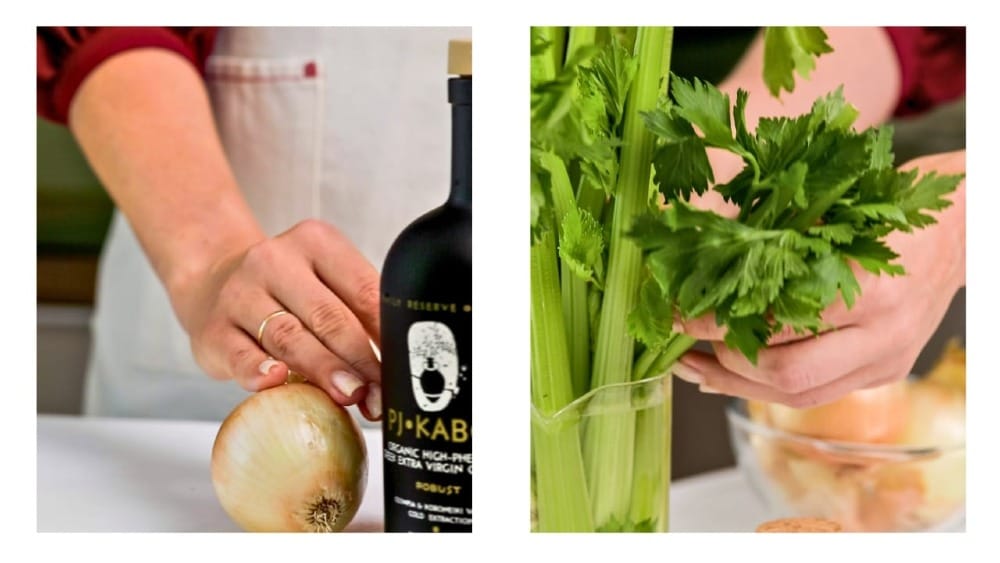
Place all in a large pot.
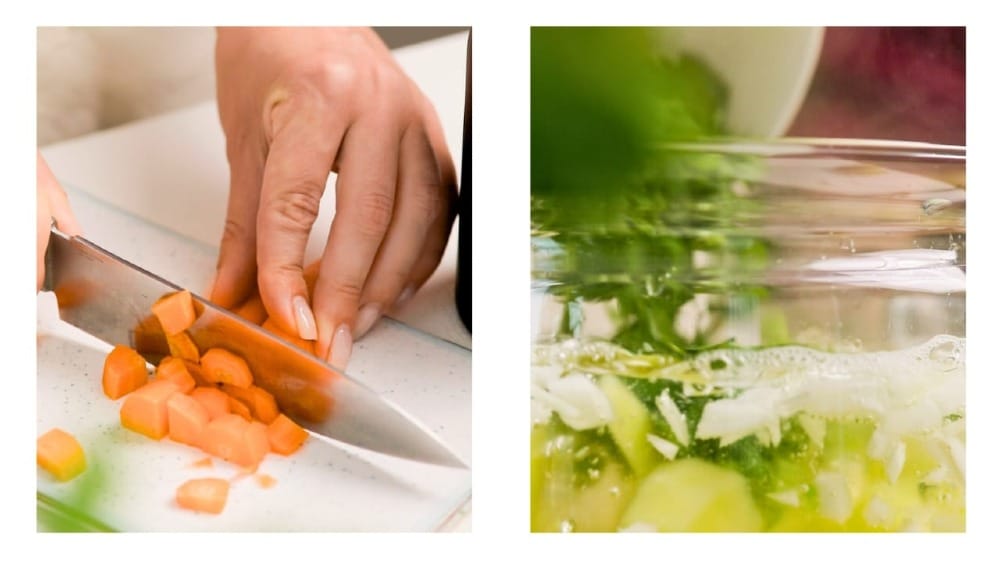
Add 1 cup PJ KABOS Extra Virgin Olive Oil Family Reserve Organic Medium and 3 cups of water. Cook over a low heat, but not completely.
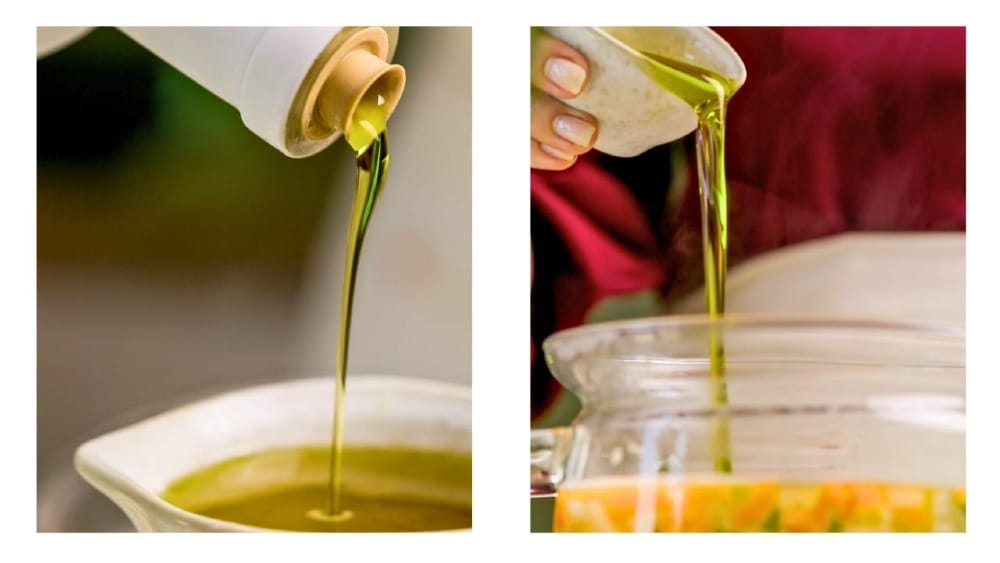
For the fish:
Cut fish fillet into chunks. Season with salt and pepper and add to the cooking vegetables.
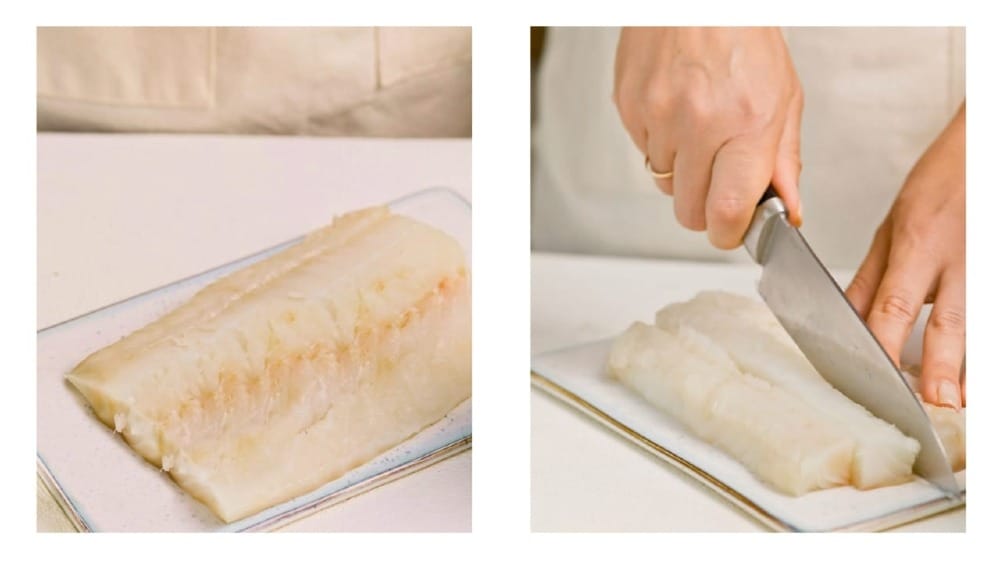
Sprinkle the juice from 1 lemon (or lime) over the pot.
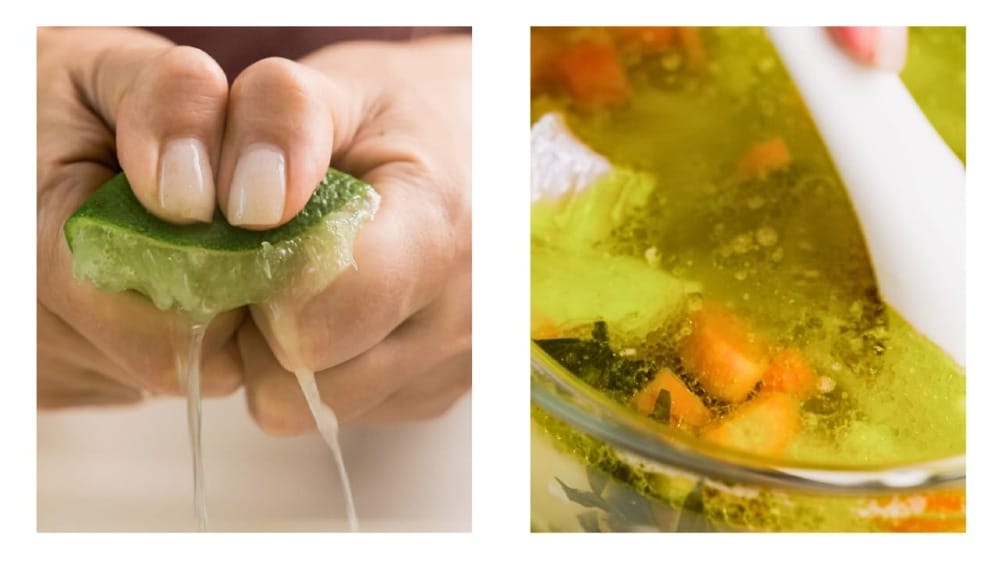
For serving:
Add salt and pepper as desired. Place lemon slices on the side to add to the thick soup as desired.
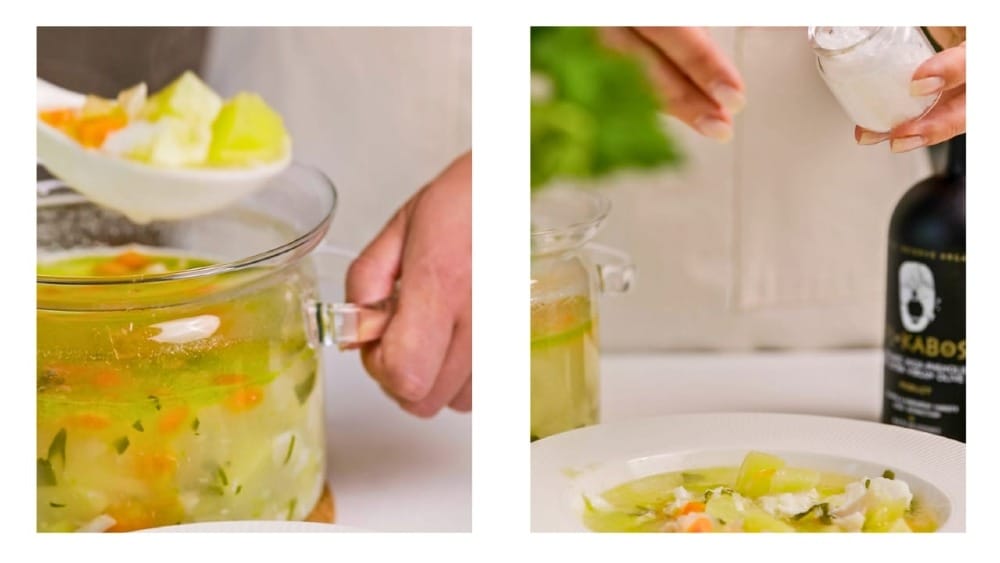
For a phenolic high, after the soup cools a bit, add approximately 1 tablespoon of PJ KABOS Extra Virgin Olive Oil Family Reserve Organic Robust to each bowl (or as desired).
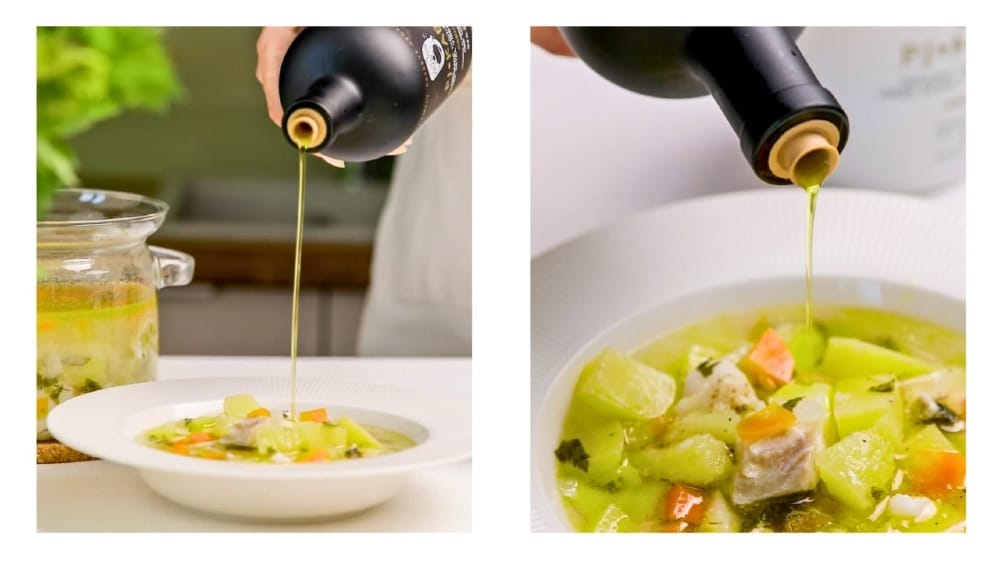
Tiropita Koulouriou — Savory Greek Cheese & Olive Oil Bun— goes well with this soup.
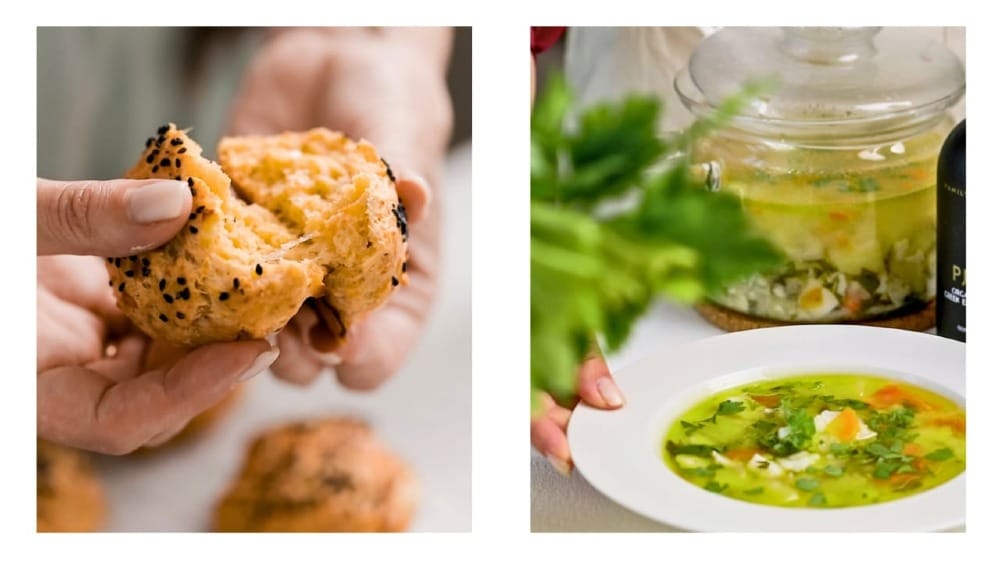
Please see our sister site, pjkabos.com (under "The Fat Olive) for the recipe's video and also read about how this ancient Mediterranean family recipe was handed down from one generation to another.
Fresh Harvest 2024/25
High-Phenolic Extra Virgin Olive Oil
from PJ KABOS
PJ Kabos Family Reserve Organic—Phenolic Shot
(Gold Bottle)
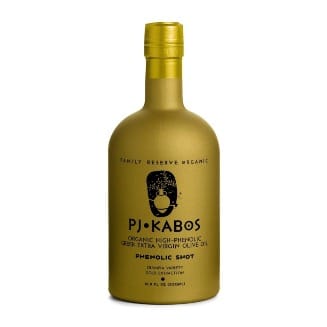
PJ Kabos Family Reserve Organic—"Phenolic Shot," is an award-winning extra virgin olive oil with possibly the highest phenolic content available in a true extra virgin olive oil today. Its intense bitterness and pungency clearly reflect the activity of these polyphenols. Meant to be taken as a shot or may be drizzled over salads, roasted vegetables, toast, fava, etc. to amplify both flavor and health benefits.
PJ Kabos Family Reserve Organic—Robust
(Black Bottle)
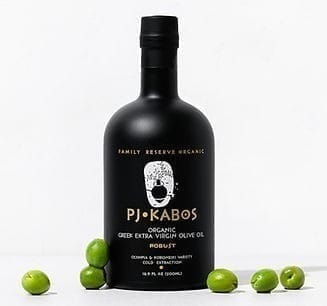
PJ KABOS Family Reserve Organic - Robust, is an extra virgin olive oil that is very high in polyphenols and adds depth, character and great health benefits to every meal.
PJ Kabos Family Reserve Organic—Medium Taste
(White Bottle)
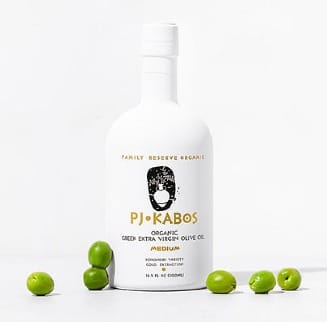
PJ KABOS Family Reserve Organic - Medium, is an extra virgin olive oil that is high in polyphenols and adds a lovely taste and great health benefits to every meal.
PJ Kabos Family Reserve—Medium Taste
(White Tin)
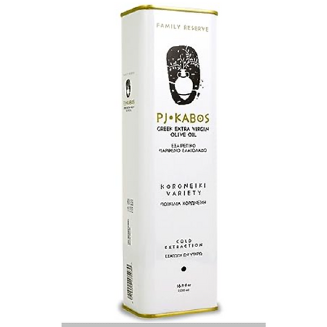
PJ KABOS Family Reserve - Medium, is an extra virgin olive oil in an easy-to-store tin that is high in polyphenols and adds a lovely taste and great health benefits to every meal.
Please enjoy having a look around our websites, pjkabos.com and oliveoil.com, as well as our Amazon Store for more about our many high-phenolic olive oils, recipes, history, etc. And follow along with us on Instagram for photos concerning olive oil production, our groves in Greece, articles about olive oil, family history and more.
PJ Kabos High-Phenolic Extra Virgin Olive Oil: Your Trusted Oil, Straight from Our Table to Yours.


